RGS Goose 4 Comes to Ridgway for
Restoration
|
|
The Ridgway Railroad Museum has a signed formal
agreement with the Telluride Volunteer Fire Dept (TVFD) to
restore Galloping Goose No. 4 to operating condition. The TVFD
deserves a big thank you for keeping No. 4 in condition such
that it is still possible to do this restoration after 55
years.
No. 4 is the only Goose that has not been restored or
otherwise modified. It is therefore the best information we
have about what the Geese were like in 1951 when the RGS shut
down operation.
We will did the work and the TVFD paid for the
materials. The move to Ridgway occured in May of 2008. The
first phases was to research for photos from summer of 1950
for our prototype, document existing condition with photos and
drawings, determine parts that will have to be acquired and
materials that will be replaced (all the wood), and carefully
begin disassembly of the rear box.
The Galloping Goose Historical Society of Dolores has
shared all of their expertise obtained in their restoration of
Goose No. 5. They have been very helpful in providing
information on what and how they did their work.
We have completely rebuilt the frieght/passenger box
using the same construction techniques as used in the
original. The engine and transmission were been rebuilt in
Telluride. The power truck and the trailing truck have been
completely refurbished and reinstalled. The original Denver
Tramway seats have been re-canned and restored.
The restoration was completed in Spring 2012. The photo below
shows restored Goose No. 4 running on the Cumbres and Toltec
Scenic Railroad.
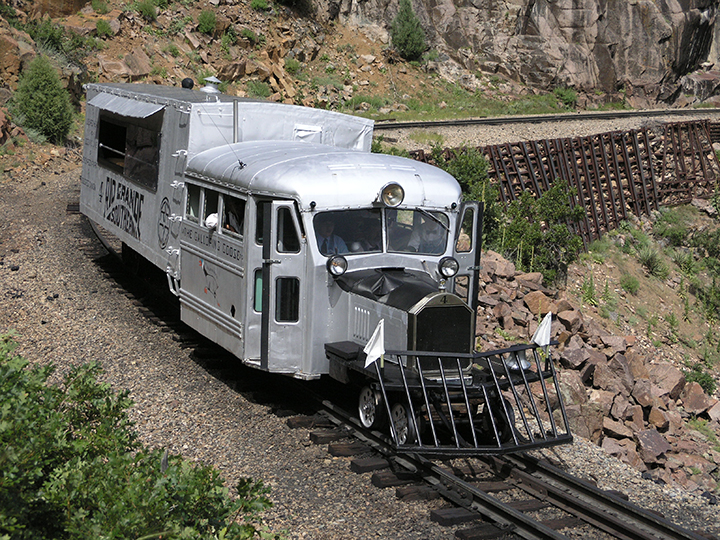
YOU CAN FOLLOW THE MOVE FROM
TELLURIDE TO RIDGWAY AND THE RESTORATION PROCESS BY
SCROLLING THROUGH THE FOLLOWING PHOTOS.
|
1) May 15, 2008 in Telluride. We oiled all sixteen axles and then
pulled the goose back about one foot and all 16 axles turned!
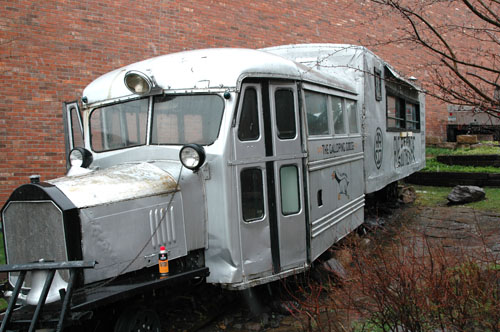
2) The following series of photos show the loading
process in Telluride on May 29, 2008
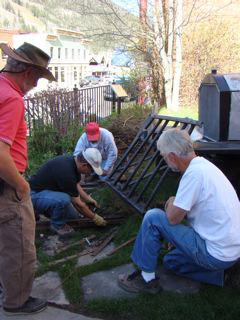

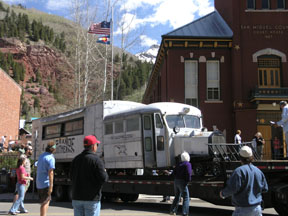
3) Goose #4 pauses on Dallas Divide for the first
time in 56 years.
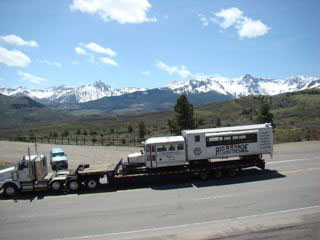
4) Arrival in Ridgway.
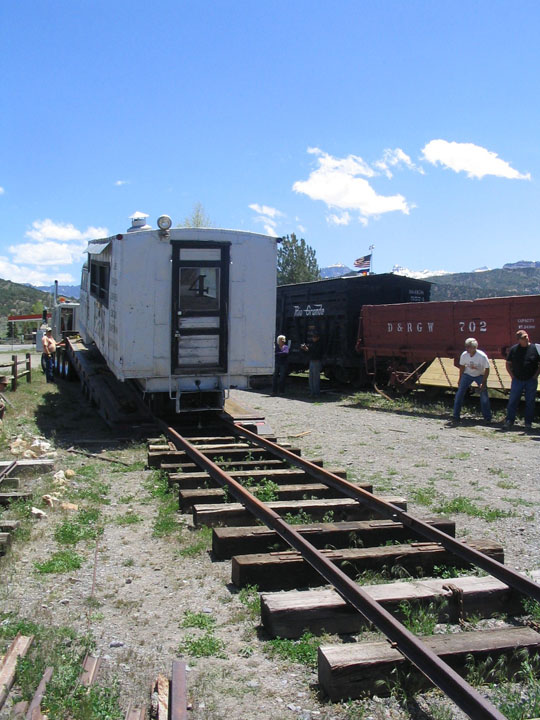
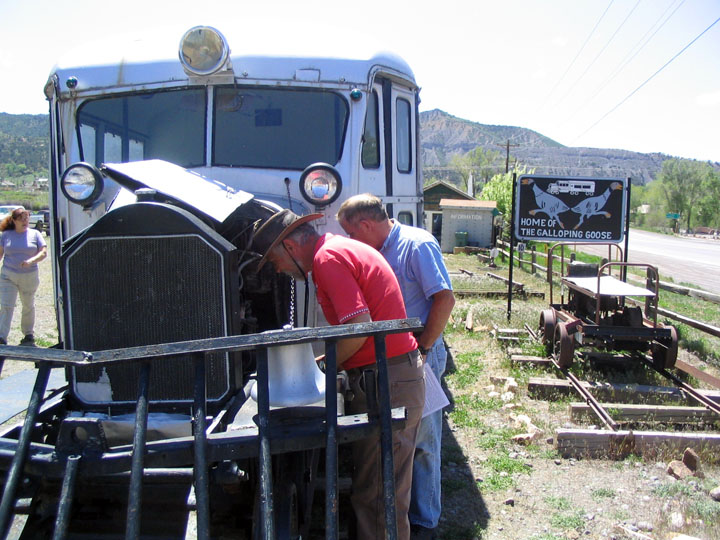
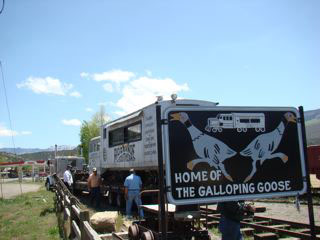
5) Wayne body separated from back and center truck
removed.

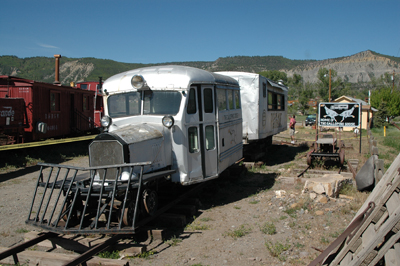
6) Bolster removed from center truck.
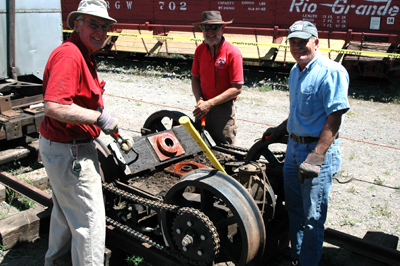
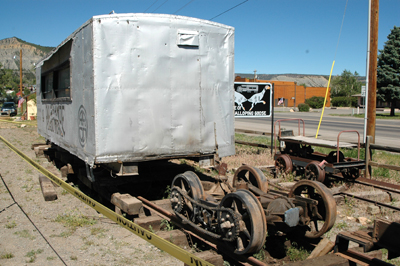
7) Removal of rear truck.
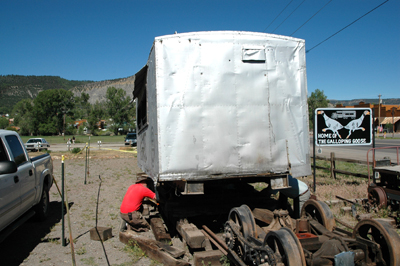
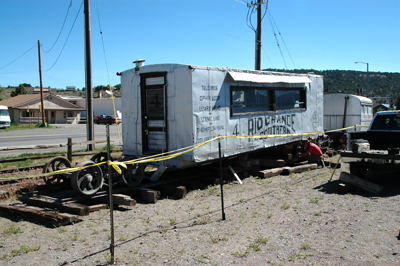
8) Removal of the interior siding begins
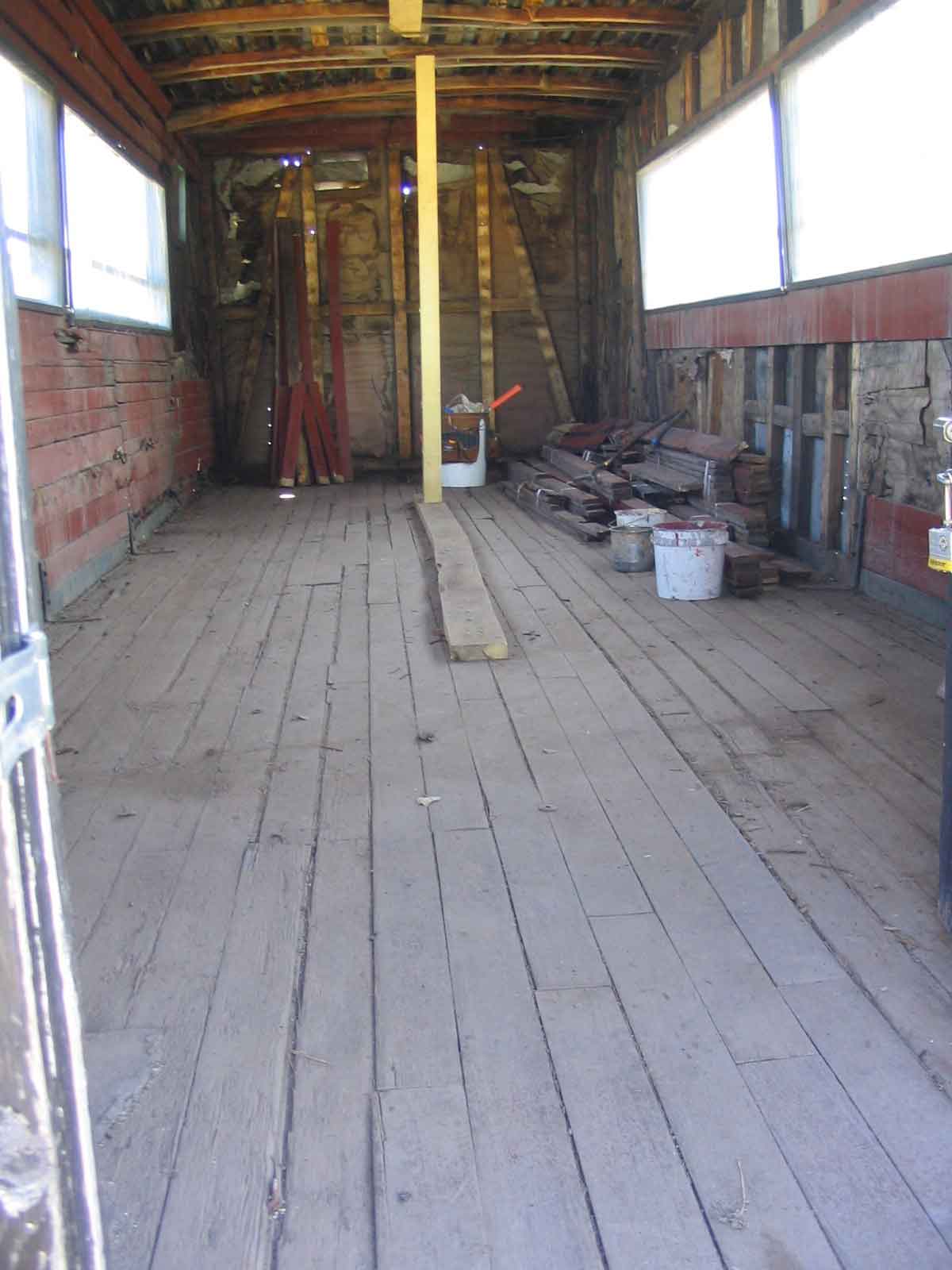
9) Removal of the outside metal sheeting

10) Siding removal continues. The box will be
completely rebuilt and then the siding reapplied.
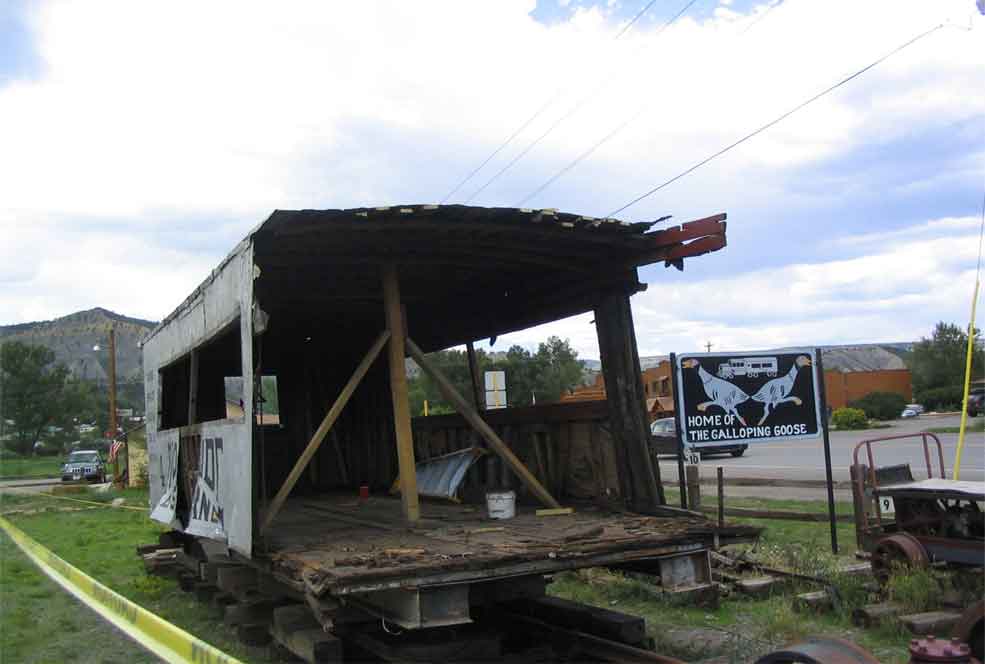
11) The superstructure of the freight box has been
removed and next the floor was removed.
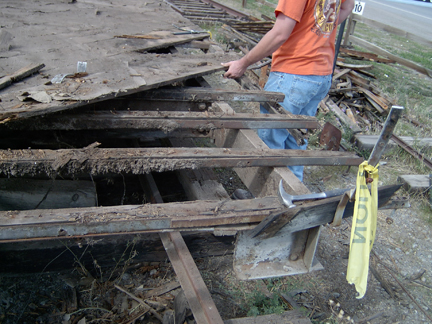
12) The deck construction is shown in this photo.
The base is made up of second-hand auto chassis U-channels filled with
wood. Note the bow in each channel. The wood was shaped not with a band
saw BUT WITH AN ADZE. The adze marks can be clearly seen. Next came 1 x
12s run at a 45 degree angle to the U-channels and finally tongue and
groove flooring running perpendicular to the u-channels. There were also
2 x 4s between the ends of each U-channel and a 2 x 4s were bolted to
the bottom ends of the U-channels
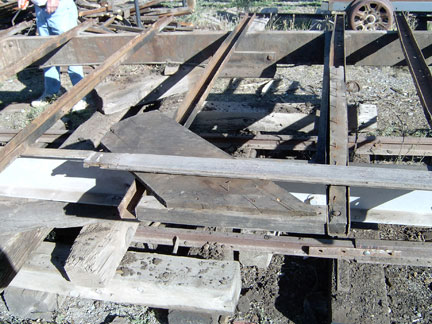
13) The freight box has now been completely cut down
to the base and the base primed. We will continue the project next
spring with the rebuilding of the freight box.
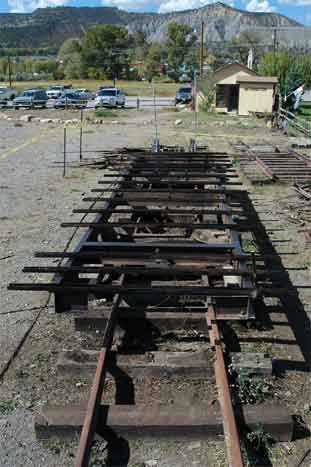
14) Construction of the new freight box began on
Saturday May 23, 2009. The wooden inserts are in the U-channels and work
begins on the wooden frame. Don Kellogg, Tom Hillhouse, Keith Koch and
Michael O'Connell.
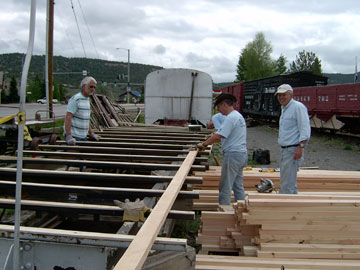
15) The frame is complete and the first piece of
sub-flooring is attached (5/23/09). Michael O'Connell, Don Kellogg, Tom
Hillhouse, Karl Schaeffer and Keith Koch,
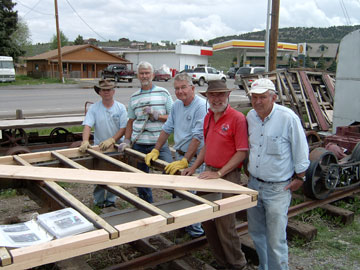
16) The sub-flooring is completed and addition of
the flooring is well underway (5/23/09). Keith Koch, Don Kellogg, Tom
Hillhouse and Don Paulson.
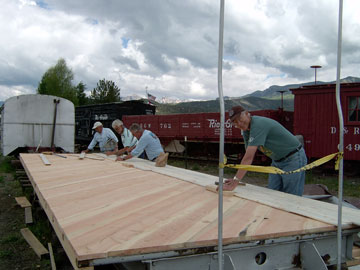
17) Flooring completed and wall construction begins
(6/3/09) Bill Pratt, Myron Matz, Michael O'Connnell and Tom Hillhouse
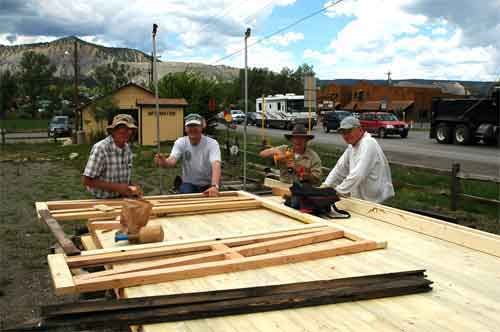
18) Two walls are up (6/05/09). Tom HillHouse,
Michael O'Connell and Stuart Harrah
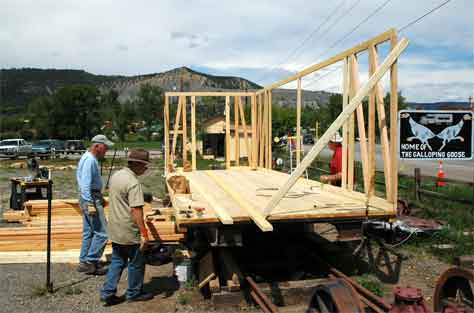
19) Three walls are up (6/05/09). Tom Hillhouse,
Michael O'Connell and Stuart Harrah

20) Work continues on the motor (6/03/09). During
work week all the pistons were removed and the transmission was
successfully shifted through all gears. Don Kellogg and John Weiss.

21) 7/14/09. The four walls are up and the
original tin siding is being reattached to the walls. Karl Schaeffer
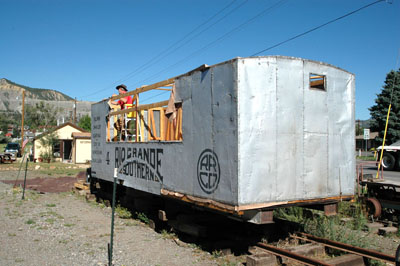
22) 7/21/09. The roof beams are now in place.
Keith Koch and Karl Schaeffer,
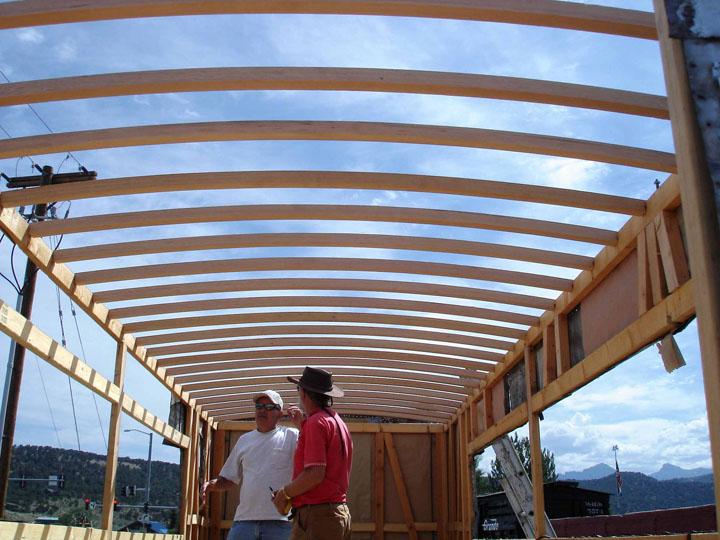
23) 7/28/09 Roof Slats are now up and the original
sheet metal siding is back on. Don Kellogg

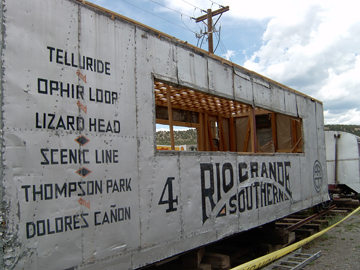
24) August 11. Interior roof complete and metal
roof added.
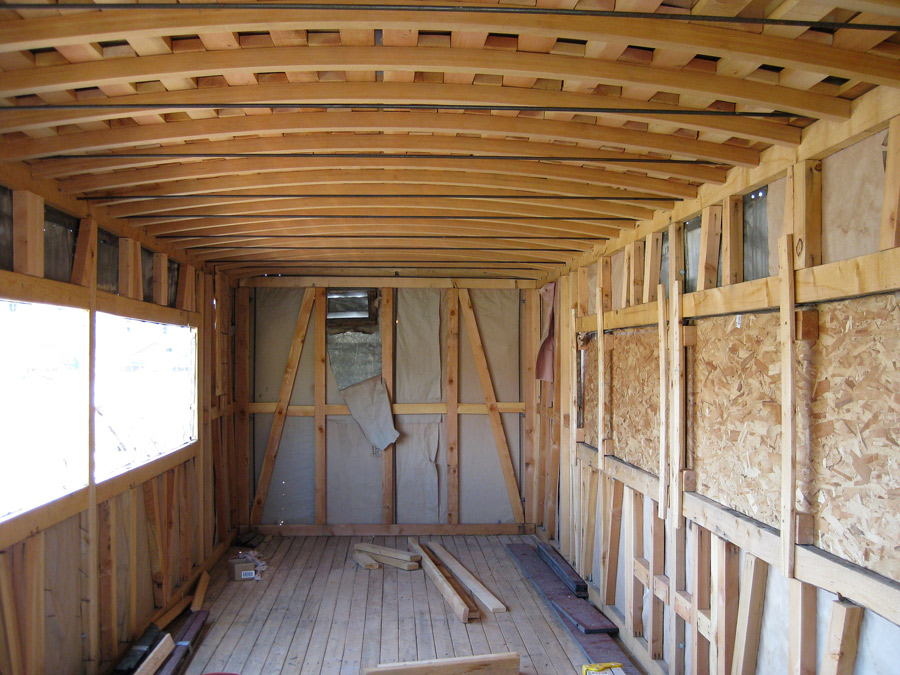
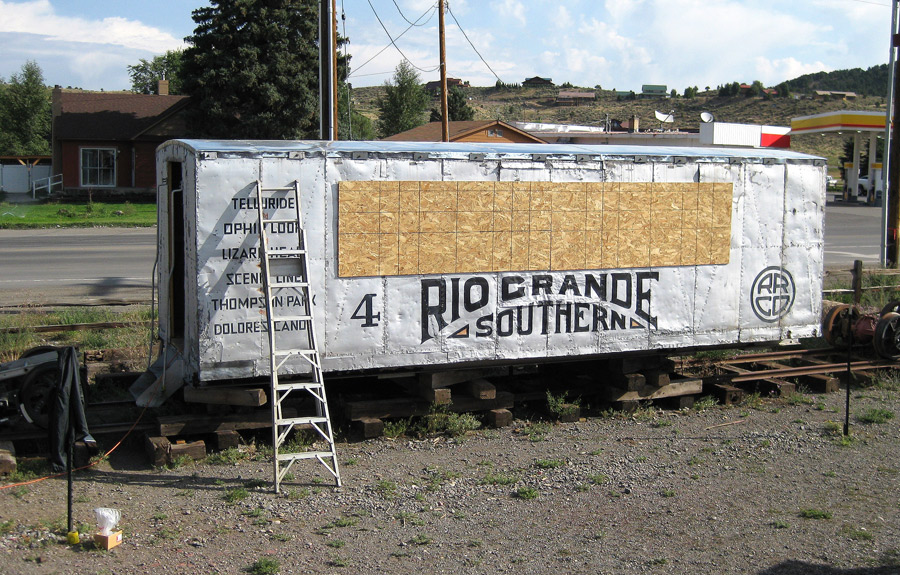
25) August 18. Metal seams sealed with additional
metal sheeting. Stuart Harrah and DanTurner
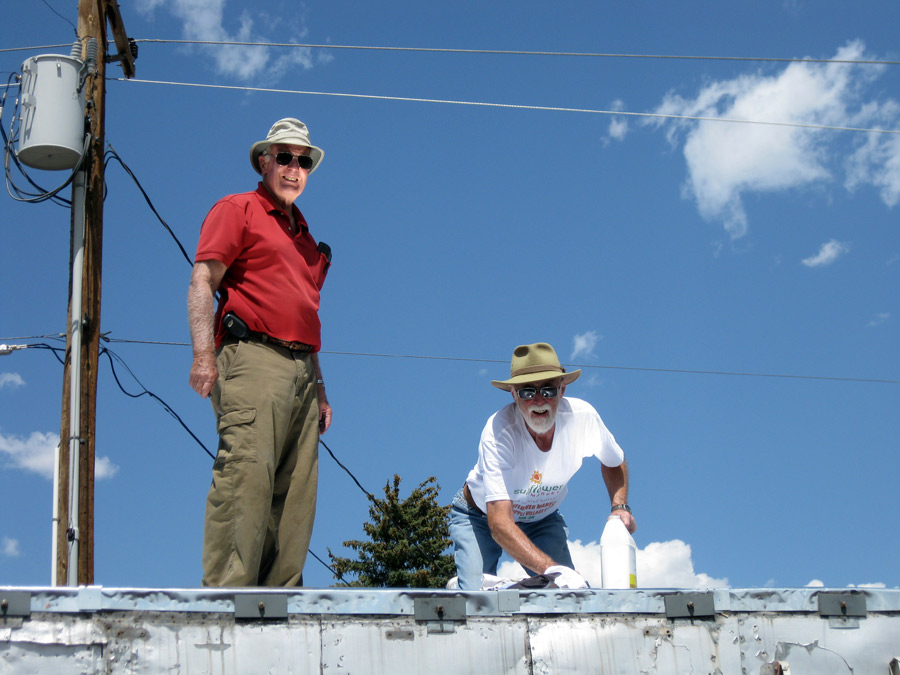
26) October 1. Karl Schaeffer and Don Kellogg add
the awning over the windows. The freight box exterior is now completed
and sealed for the winter.
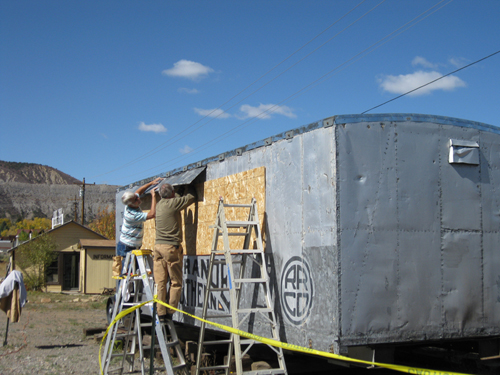
27) March 9, 2010. Goose #4 awaits spring 2010
restoration work.
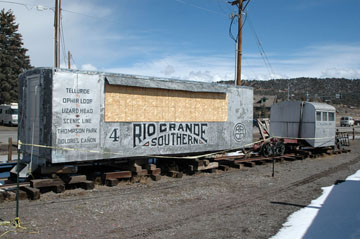
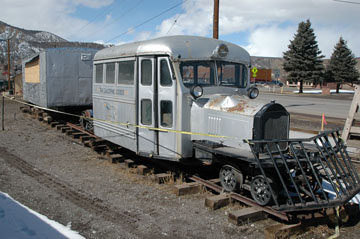
28) May 19, 2010. The engine is removed for
rebuilding in Telluride.
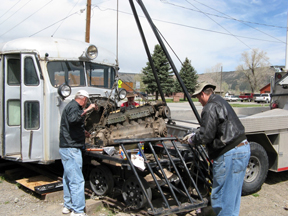
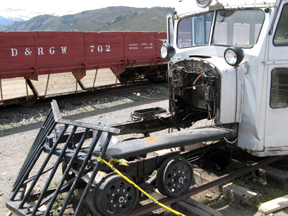
29) May 27, 2010 (l) and June 28, 2010 (r). The
original interior wood is being reattached. The red or brown wood is
original siding that has been reattached and the white primed wood is
replacement pieces.
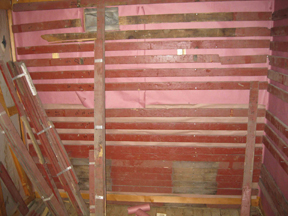
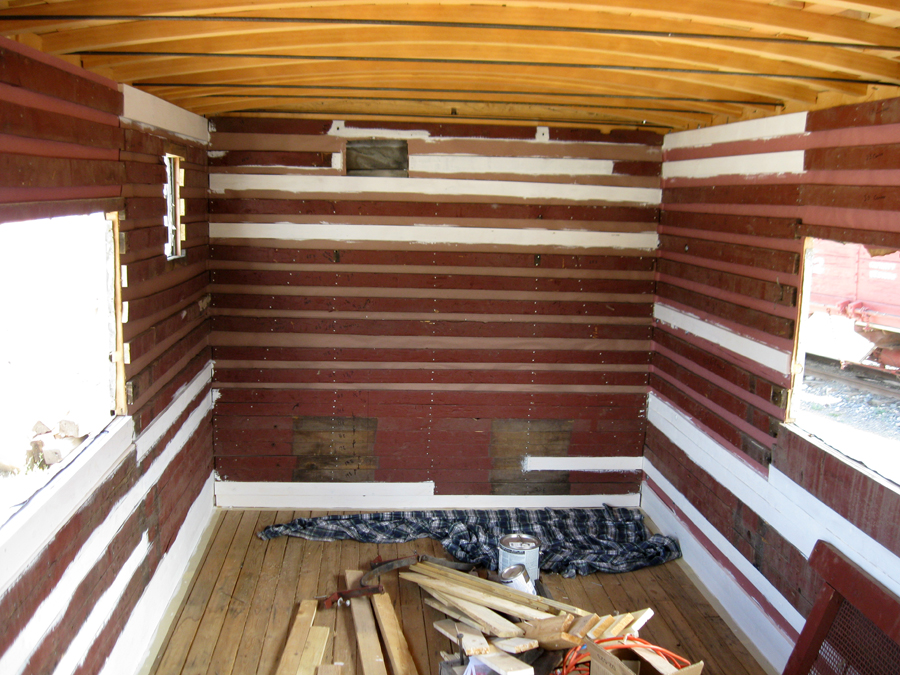
30) August 16th (L to R): Keith Koch and Stuart
Harrah installing the goose stove insulation; Karl Schaeffer, Tom
Hillhouse and Don Kellogg installing one of the drive axles. The
reinstalled Goose water tank used by the Motormen to refill the Goose
radiator.

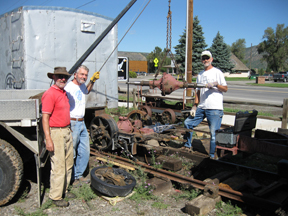
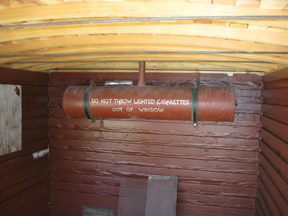 \
\
31) September 15th (L to R):Sandblasting the Wayne
bus body; Michael O'Connell painting the sand blasted Wayne bus body

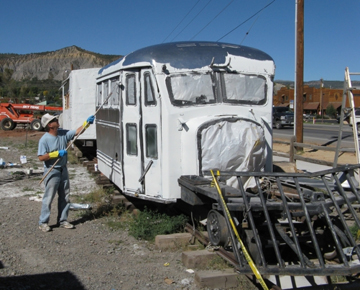
32) September 28th (L to R): Front Truck removed
for repair; Don Kellogg and Karl Schaeffer prepare to re-attach the
power truck
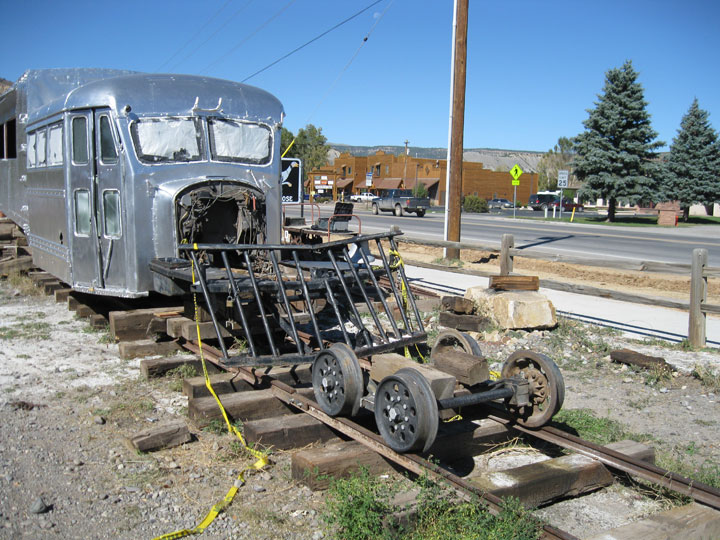
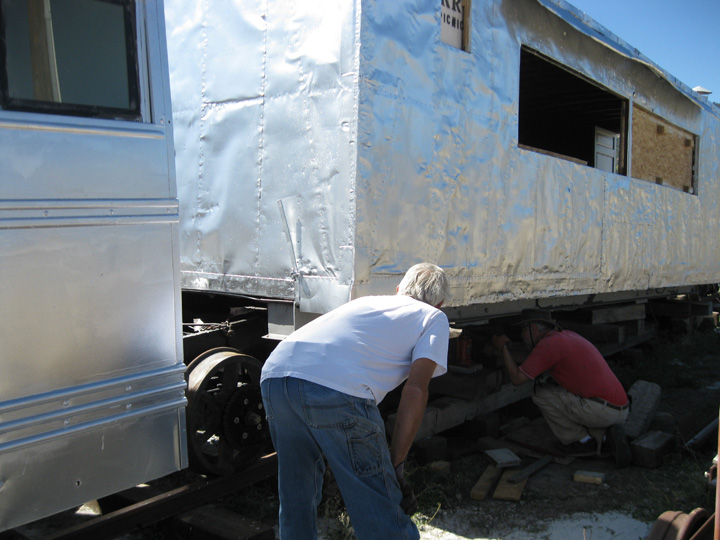
33) September 28th: Rod Bunyard (L) and Chris
Weiser (R) work on removal of the non-powered freight box truck.
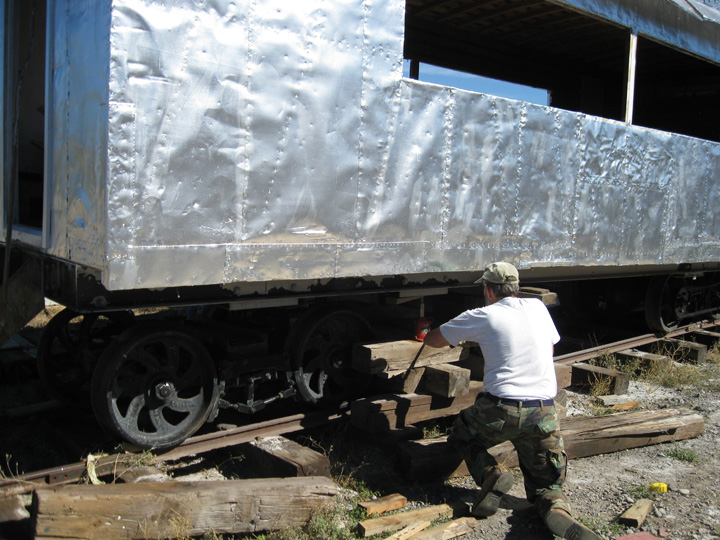
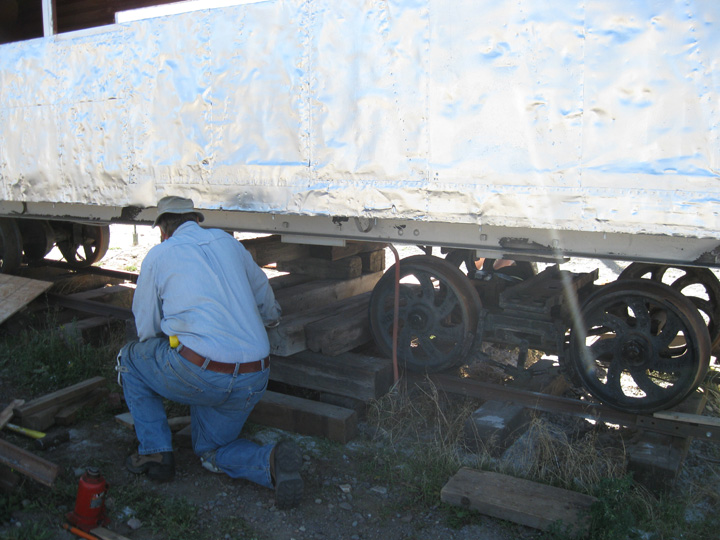
34) October 5, 2010: (L) Chris Weiser and Don
Kellogg disassemble the front truck. (R) Tom Caldwell removes the
masking from the Goose bus body.

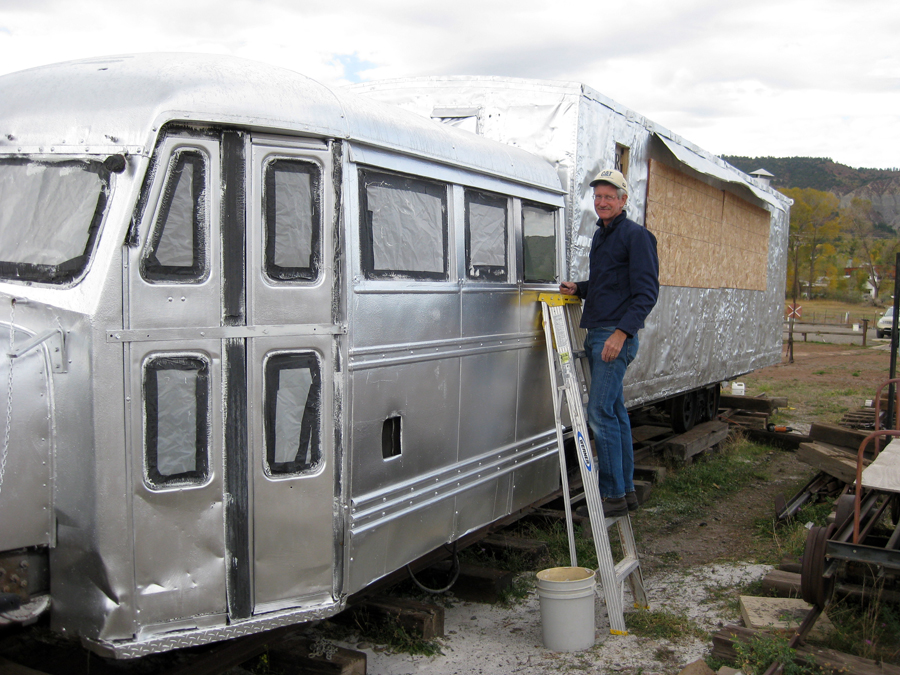
35) Oct 5, 2010: Goose No. 4, with its refurbished
power and rear trucks reinstalled and freshly painted, is ready for a
winter's slumber until spring 2011 when we will resume the restoration.
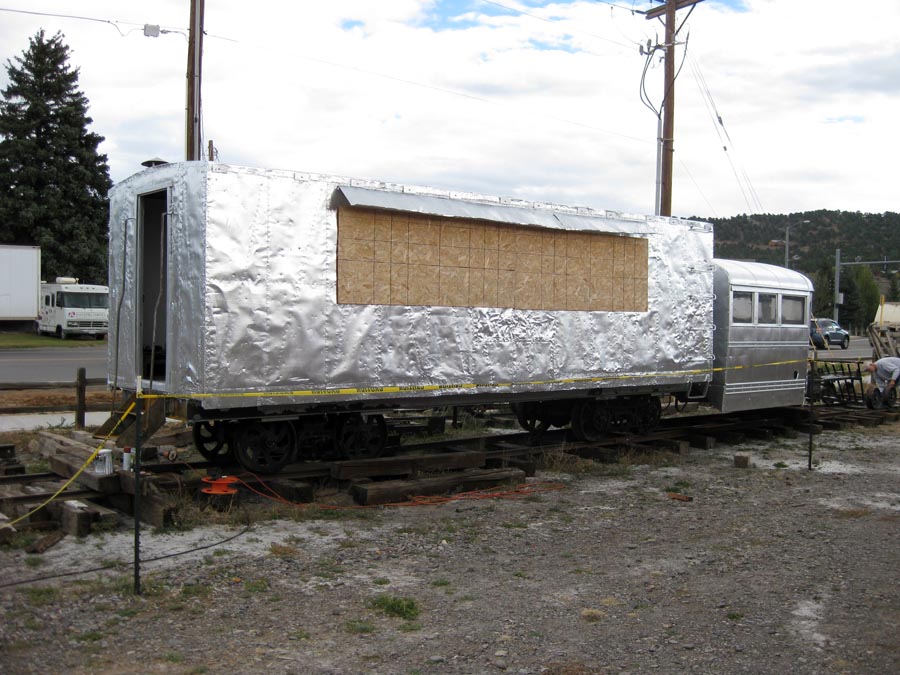
36) October 19, 2010: Chris Weiser has just
finished painting the seat pedestals, a tedious job that required
sanding, priming and repainting.
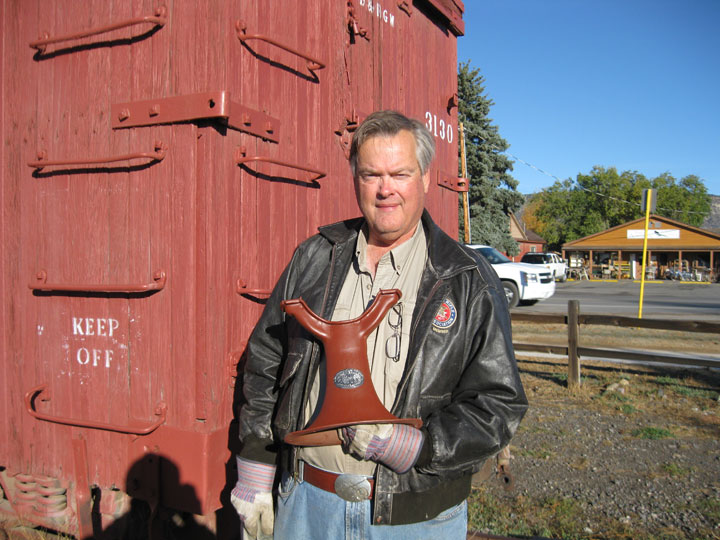
37) May 3, 2011. The rebuilt front truck is
reattached to Goose 4.

38) May 14, 2011. Chris Weiser, Bob Meyer and Karl
Schaeffer reinstalling the motor after rebuilding.
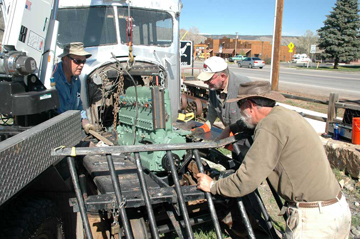
39) June 14, 2011. Dan Turner works on the stove
base.

40) June 14, 2011. Michael McConnel (L) works on
the brake rigging while Bob Meyer (R) puzzles over the clutch mechanism.


41) June 28, 2011. New radiator being admired by
Karl Schaeffer (L) and Bob Meyer (R).

42) July 11, 2011. The rebulit concession stand
takes shape.
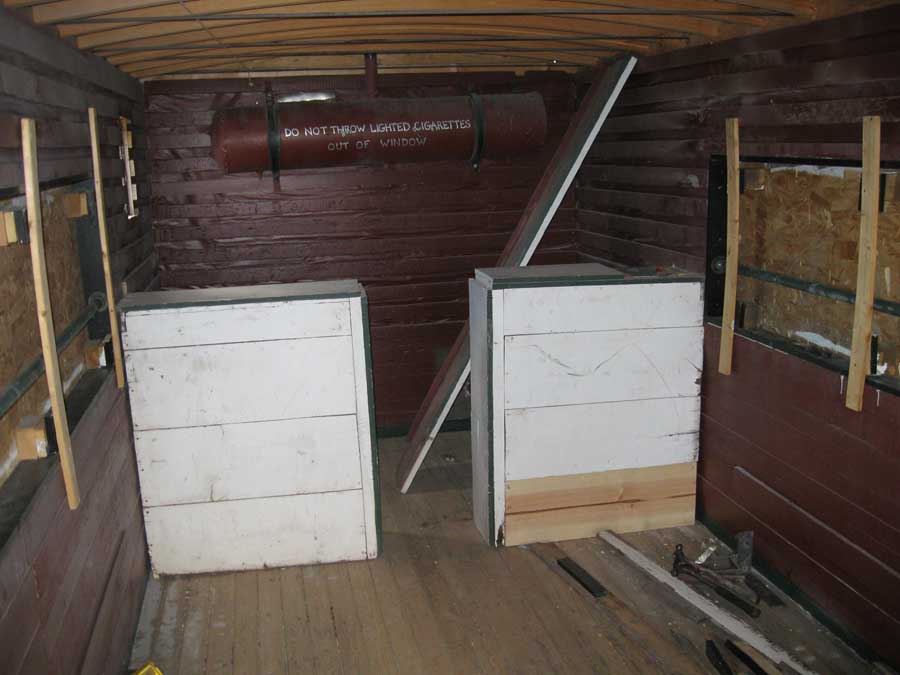
43) July 26, 2011. Street car seats and Montgomery
Ward coal stove reinstalled in the freight box.
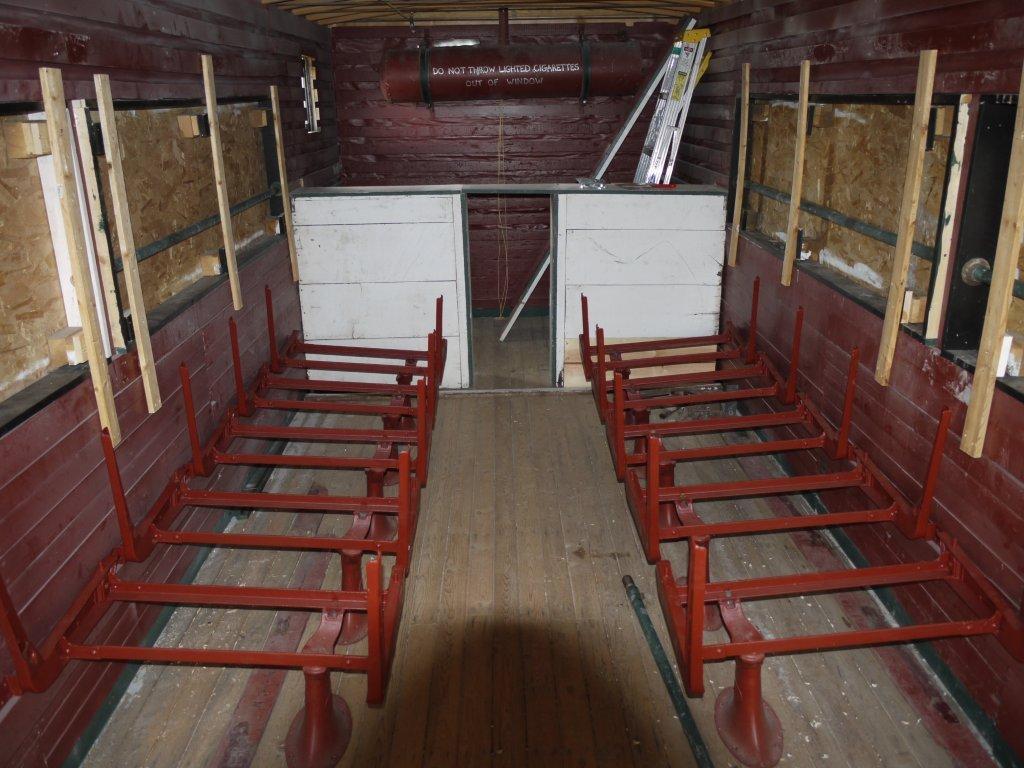
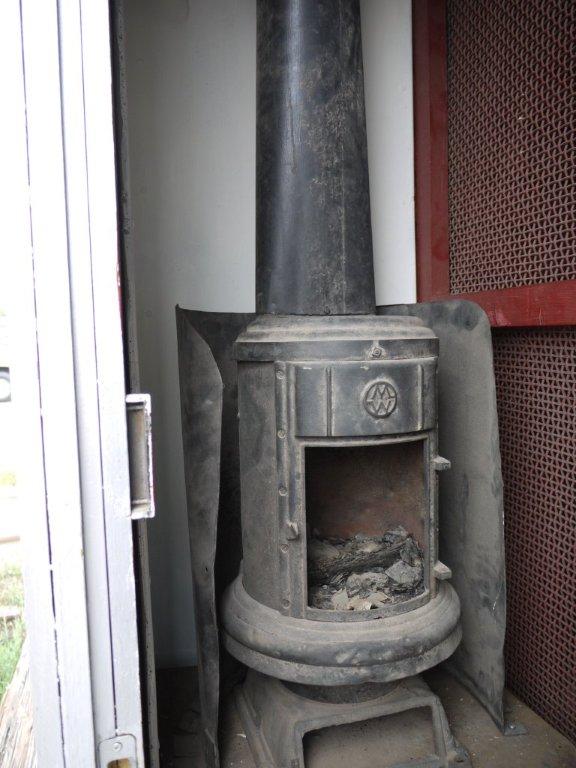
44) August 9, 2011. The re-caned seat backs were
installed in the freight box (left photo below) as well as the completed
concession stand. Chris Weiser's new bell was also installed (right
photo bvelow).
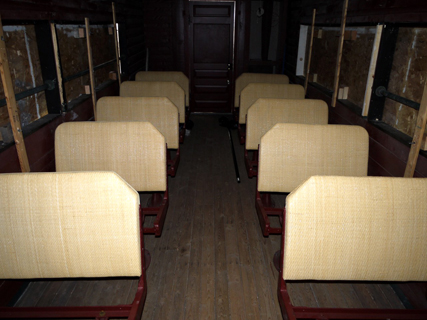
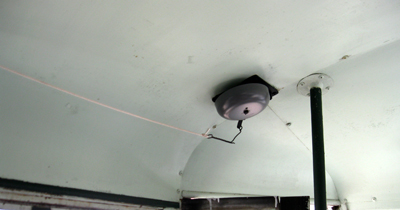
45) August 16, 2011. Bob Meyer's newly built dash
board and the first attempt in 58 years at starting the motor on Goose
No. 4
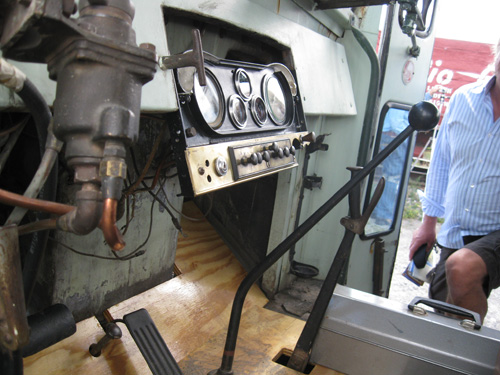
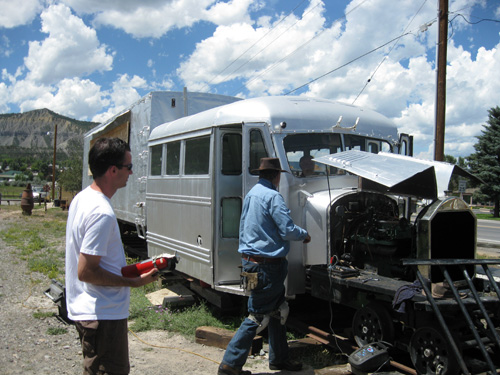
46) August 29, 20011. Goose No 4 makes about ten
round trips of 100 feet in each direction. Bob Meyer, Chris Weiser, Don
Paulson, Tom Hillhouse, Don Kellogg, Jim Pettengill and Karl Schaeffer
(All members of the Goose 4 restoration team) took turns running the
goose. Unfortunately, numerous other members of the team were not able
to be there. Click here
to see several videos of these runs: The photo below shows Karl
Schaeffer as Motorman.
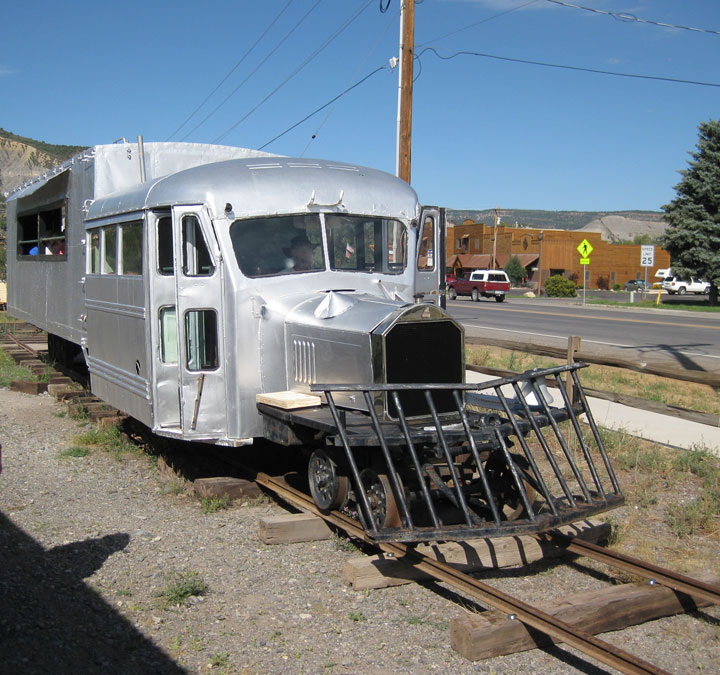
47) September 3, 2011. The restored front
headlights and rear stoplights were installed.
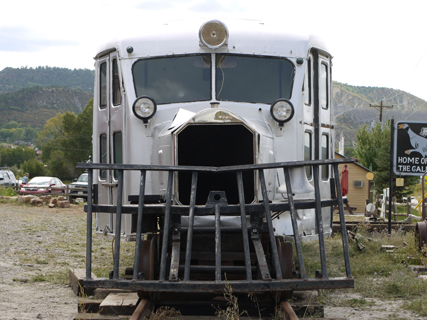
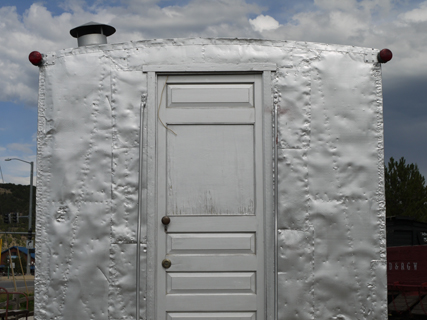
48) September 13, 2011. The front end was painted,
the lights connected, the interior control panel painted and the snack
stand installed in the box. The third photo shows Greeley, CO resident
Tom Caldwell hard at work painting the pilot.
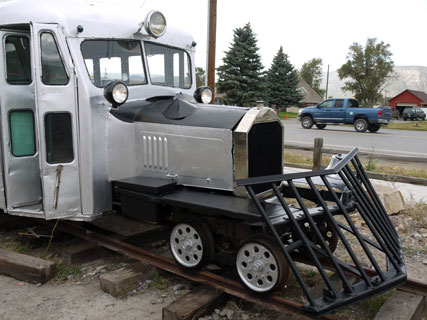

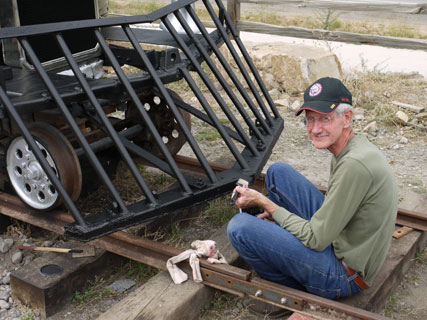
49) May 26, 2012. Karl Schaeffer, Tom Hillhouse, Bob
Meyer, Jim Pettengill and Don Kellogg applied some of the new lettering
to Goose No 4. Wow is all I can say!
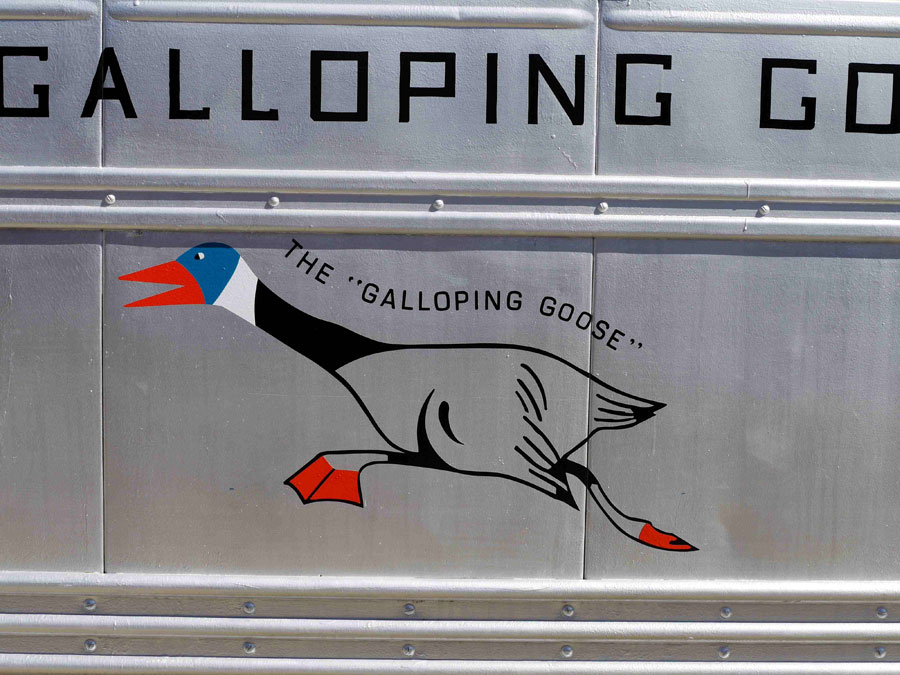
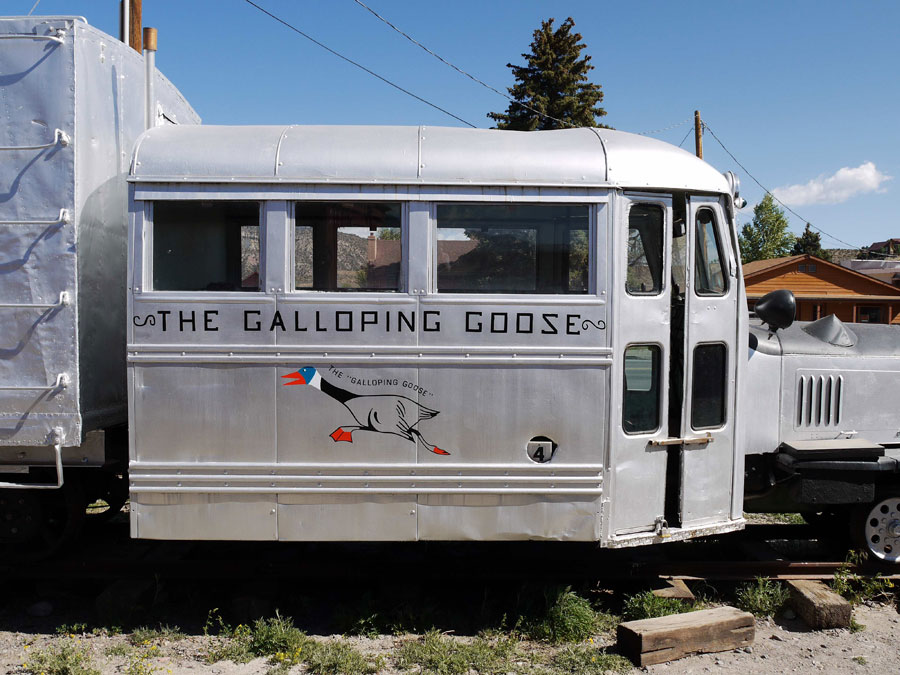

All original
materials, text, and images Copyright 2011 by the Ridgway Railroad
Museum. All rights reserved. Unauthorized use or reproduction of any
materials, text and images without the express written permission of the
Ridgway Railroad Museum is strictly prohibited.
All rights to materials, text, and images attributed to other sources
are reserved to those sources. Unauthorized use or reproduction of any
these materials, text and images without the express written permission
of the owners is strictly prohibited.








































 \
\





























